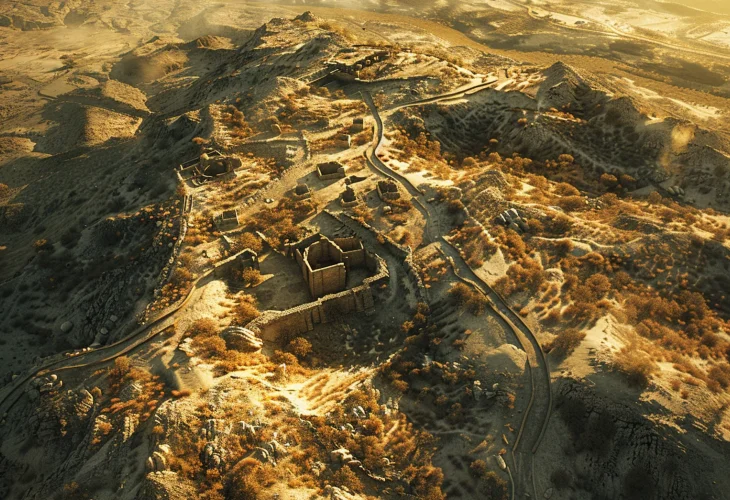History and Archaeology
Uncovering the Ancient City of Ziklag
The place where King David rescued captives and established his first law of fairness

About three thousand years ago, a dramatic scene unfolded in the Land of Israel. King Saul and the Israelite camp set up near the famous spring of Ein Yizrael, the very place where Queen Jezebel would later meet her end. Below them, at Aphek, the Philistines gathered in massive numbers, preparing for battle. Among them marched David, the young red-haired shepherd from Bethlehem, already known for his courage and faith. David was with the Philistines because their king, Achish of Gath, trusted him and had even given him a city of his own: Ziklag.
Ziklag originally belonged to the tribe of Judah, but the Philistines had taken it about a hundred years earlier. For David, it became the base of his rule. Though the prophet Samuel had anointed him as Israel’s future king, Saul did not recognize him. So David ruled only over a small group from Judah, with Ziklag as his stronghold.
For three days David was away from the city, meeting with Achish. But when he returned, he found devastation. The Amalekites had raided in his absence, burned Ziklag, taken all the plunder, and captured the women and children including David’s own wives, Ahinoam of Jezreel and Abigail of Carmel.
David’s men were furious. In their despair, some even spoke of stoning him, blaming his absence for the disaster. But David turned to Abiathar the priest and sought guidance through the Urim and Thummim, the sacred oracles of the time. Should he pursue the Amalekites? The divine answer came clearly: “Pursue, for you shall surely overtake and save.”
With renewed strength, David and his six hundred men set out. They crossed southward toward Amalekite territory, reaching the Besor Brook, today known as Eshel Park. Two hundred men stayed behind to guard the baggage, while the rest pressed forward. On the way, they found a slave who led them directly to the Amalekite camp, near what is today Rafah.
The Amalekites were celebrating their success, feasting on their loot. For an entire day, David and his men attacked, defeating them completely. Only a small group managed to escape on camels into the desert. Every captive was rescued, and vast amounts of additional plunder were recovered.
When they returned to Ziklag in triumph, a dispute broke out. The men who had fought wanted the spoils for themselves, but those who had stayed behind insisted they too deserved a share. David ruled with wisdom and fairness: everyone would share equally. He even established this as a permanent law in Israel:
"For as is the share of the one who goes down to battle, so shall be the share of the one who stays by the equipment; they shall share alike.” (1 Samuel 30)
This was the first law David enacted as a leader, and it reflected his belief in unity and fairness.
But where exactly was Ziklag, the city tied to such a critical moment in Jewish history?
In the early 20th century, German researcher Alt identified it with Tel Halif in the northern Negev, near today’s Lahav Forest. A nearby settlement was even given the name “Ziklag.” But later, scholars doubted this, noting the geography did not match the Biblical description. The settlement’s name was eventually changed to “Lahav.”
In 2019, archaeologist Professor Yosef Garfinkel suggested that Ziklag was at Khirbet er-Rai, between Kiryat Gat and Lachish, where today lies the “Angels’ Forest.” Excavations showed Philistine settlement there until David’s time, after which the site seemed to fall into Judean hands. It was an exciting idea, but again, the location was too far north. The Bible describes Ziklag as being in the Negev, closer to Gaza.
Finally, in 2020, Professor Moshe Garstiel presented a discovery that matched the Biblical evidence perfectly: Tel es-Sera. The name itself held a clue. In Arabic, “Tel es-Sera” means “Law and Judgment,” recalling the very law of fairness David had declared there. The valley below is called “Wadi Saria,” also echoing the story. Even the site’s shape adds weight: from above, it resembles a small basket, a ziklon in Biblical Hebrew, from which the name Ziklag may have come.
Today, this identification has gained wide acceptance. Tel es-Sera, the city where David mourned, fought, and proclaimed his first law, is remembered not only as a place of tragedy but also as a symbol of unity and justice in Israel’s history.

